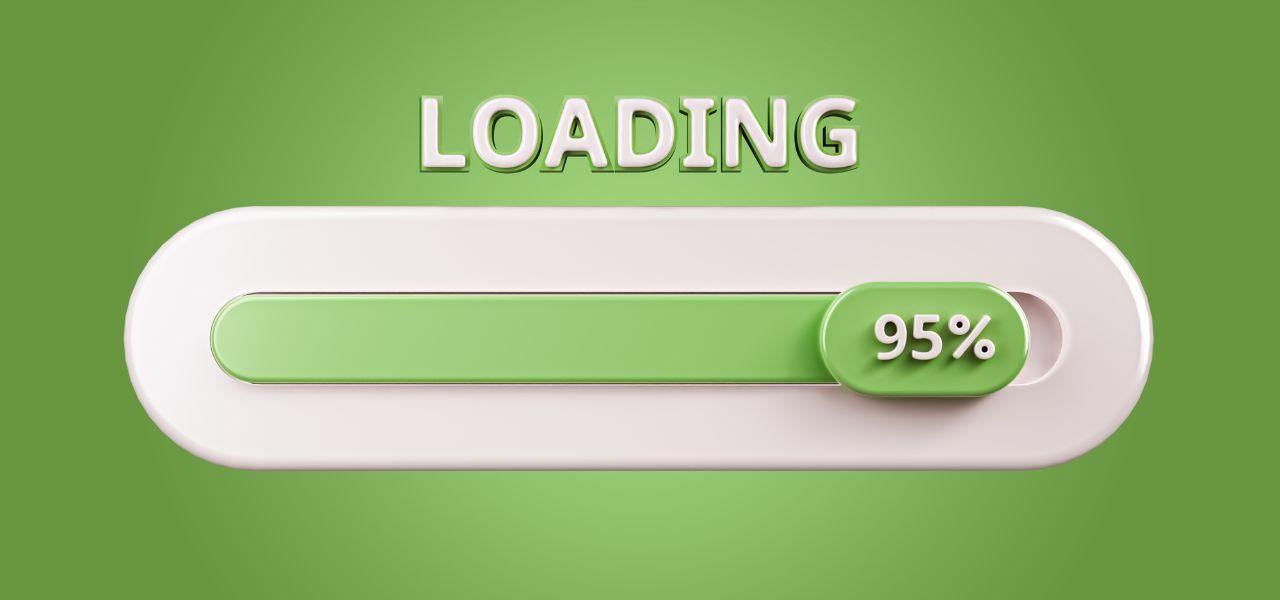
When we talk about a website and specifically its functionality, how can we forget website loading speed? that’s extremely important nowadays! As a website owner, it’s really important to keep your website running smoothly and efficiently.
A slow website always frustrates visitors and creates a negative impact on search engine rankings. That’s why it’s essential to take steps to optimize website loading speed.
In this article, we’ll explore 10 quick and easy ways to boost a website loading speed and how to improve overall site performance. So let’s get started….
1. Optimize Your Images
Images are essential for creating beautiful and engaging websites, but using a higher number of images can slow down your website loading speed. If you have higher number of images, you should optimize them to improve your website loading speed. To do so you have to compress the images without sacrificing their quality.
There are many tools available through which you can do this, like Photoshop, GIMP, and online tools like Tiny PNG and JPEG Optimizer. You can also use lazy loading to defer the loading of images that are not visible on the screen until the user scrolls down to them.
2. Minify CSS and JavaScript
CSS and JavaScript files can also slow down your website if not optimized correctly. To optimize these files, reduce their size, eliminate unnecessary files, and utilize minification.
Minification is the process of removing all unnecessary characters from code without affecting functionality, resulting in smaller file sizes and faster loading times.
3. Use Content Delivery Networks (CDNs)
CDNs work by caching your website’s content on servers worldwide, It reduces the distance between the user and the server.
This can significantly reduce loading times, especially for users who are geographically far from your server. Moreover, CDNs can also protect your website from DDoS attacks, ensuring your website is always available.
4. Enable Browser Caching
Browser caching allows users of your website to store some of your website’s data on their devices which helps to improve your website loading speed. You can reduce the number of requests that your website makes by enabling browser cache because some data will already be on the user’s end which will lead to faster loading speed.
5. Reduce HTTP Requests
Reducing HTTP requests also helps to reduce website loading time because every time a user loads your website, the browser makes an HTTP request to your server in order to retrieve data.
The data includes HTML, CSS, and JavaScript files, as well as images, videos, and other content. Minimizing the number of HTTP requests can reduce loading time. To do this, you need to combine files, eliminate unnecessary files, and reduce the size of files wherever possible.
6. Use Gzip Compression
Gzip is a software application used to compress files, reducing their size and enabling faster transfer times. Enabling Gzip compression on your website can significantly reduce loading times, especially for large files like images, videos, and PDFs.
By compressing your website’s files before sending them to users, you can reduce the amount of data that has to be transmitted, leading to faster loading times.
7. Reduce Server Response Time
The time it takes for your server to respond to a user’s request can have a significant impact on your website loading speed. To reduce server response time, ensure that your server is of a high quality and it can handle your website’s traffic.
Also, optimizing database, minimizing HTTP requests, and utilizing caching can help to reduce server response time.
8. Utilize Lazy Loading
Lazy loading is the process of loading content as it becomes visible on the screen rather than loading all content at once. This can significantly reduce loading times especially for websites with a lot of images or videos. Lazy loading can also reduce the number of HTTP requests which can result in faster loading times.
9. Optimize Your Website’s Code
Optimizing your website’s code can also help you to improve your website’s loading speed. By removing unnecessary code, optimizing your HTML and reducing the number of plugins and scripts can help you to improve your website’s performance.
10. Monitor Your Site’s Loading Speed
Finally, it’s essential to monitor your website loading speed regularly to ensure that it’s always performing at its best. You can use tools like ‘Google Page Speed Insights’, ‘Pingdom’, and ‘GT Metrix’ to test your site’s loading time and get suggestions for improving it.
By regularly monitoring your site’s loading speed, you can identify issues early and take action to resolve them before they impact your users’ experience.
Conclusion
In today’s fast-paced digital world, a slow-loading website can be a deal-breaker. By implementing the tips in this article, you can significantly improve your website loading speed and provide a better experience for your users. Remember to optimize your code and images, minimize HTTP requests, enable browser caching, use a content delivery network (CDN), upgrade your hosting plan if necessary, and monitor your website loading speed regularly. With these quick and easy tips, you can boost your website loading speed and outrank your competitors in Google search results.

1 thought on “10 Quick and Easy Ways to Boost Your Website Loading Speed”
Hello to every body, it’s my first visit of this blog; this blog carries amazing and in fact
good stuff designed for readers.